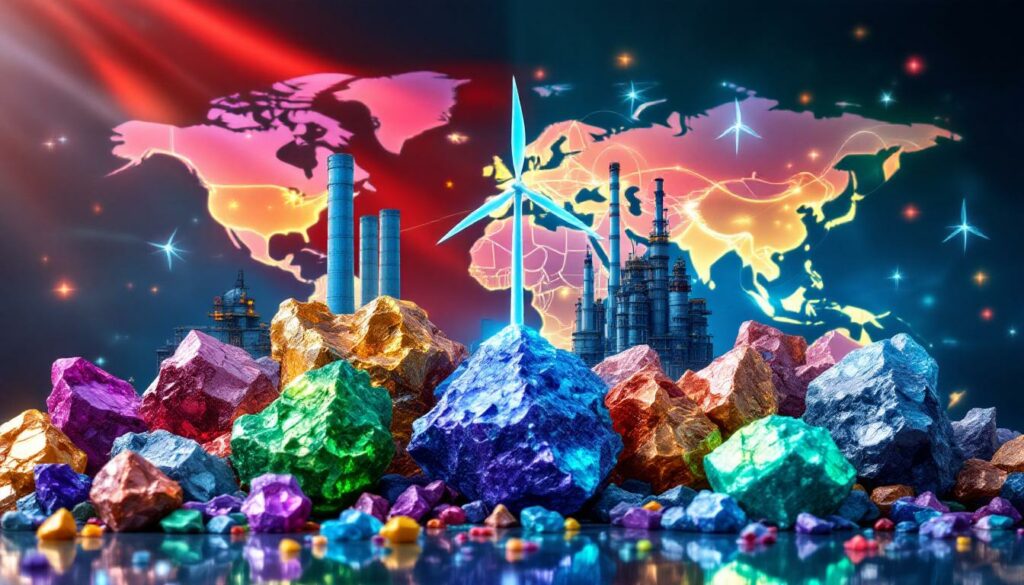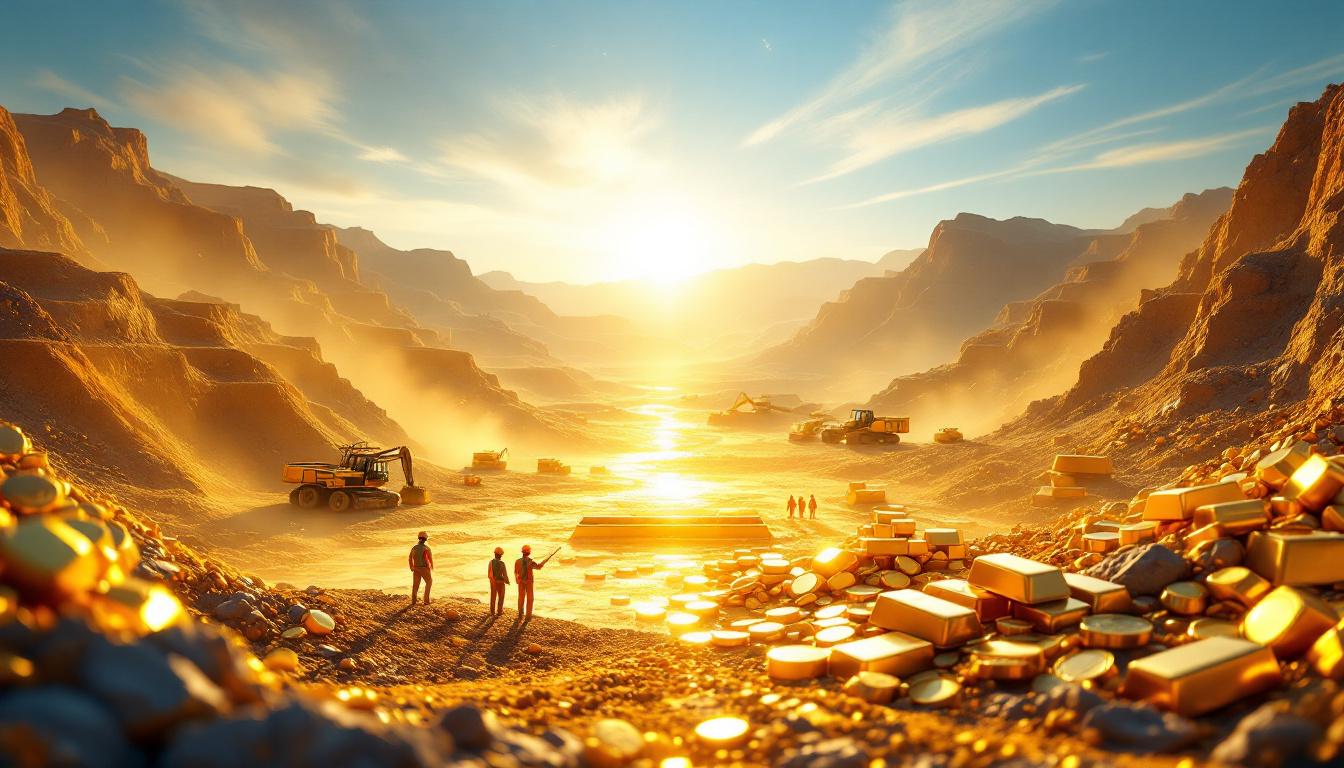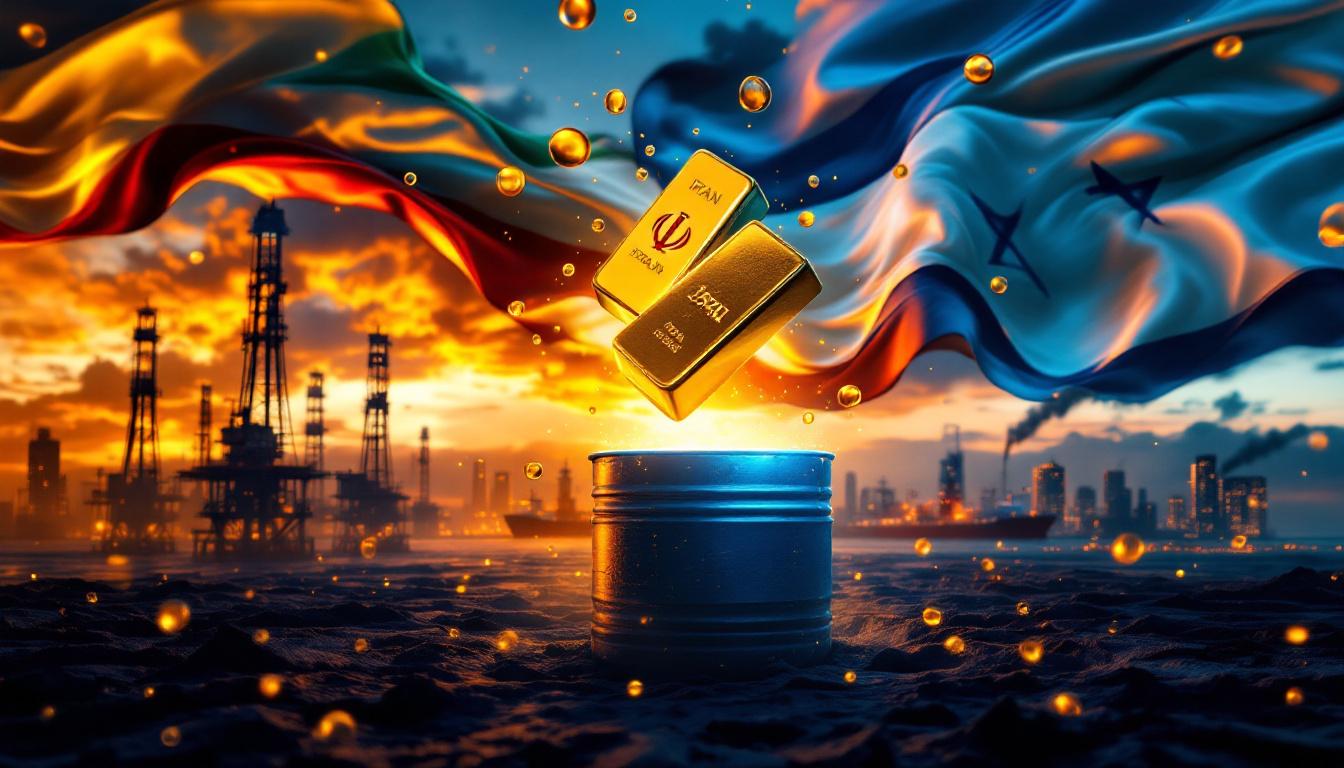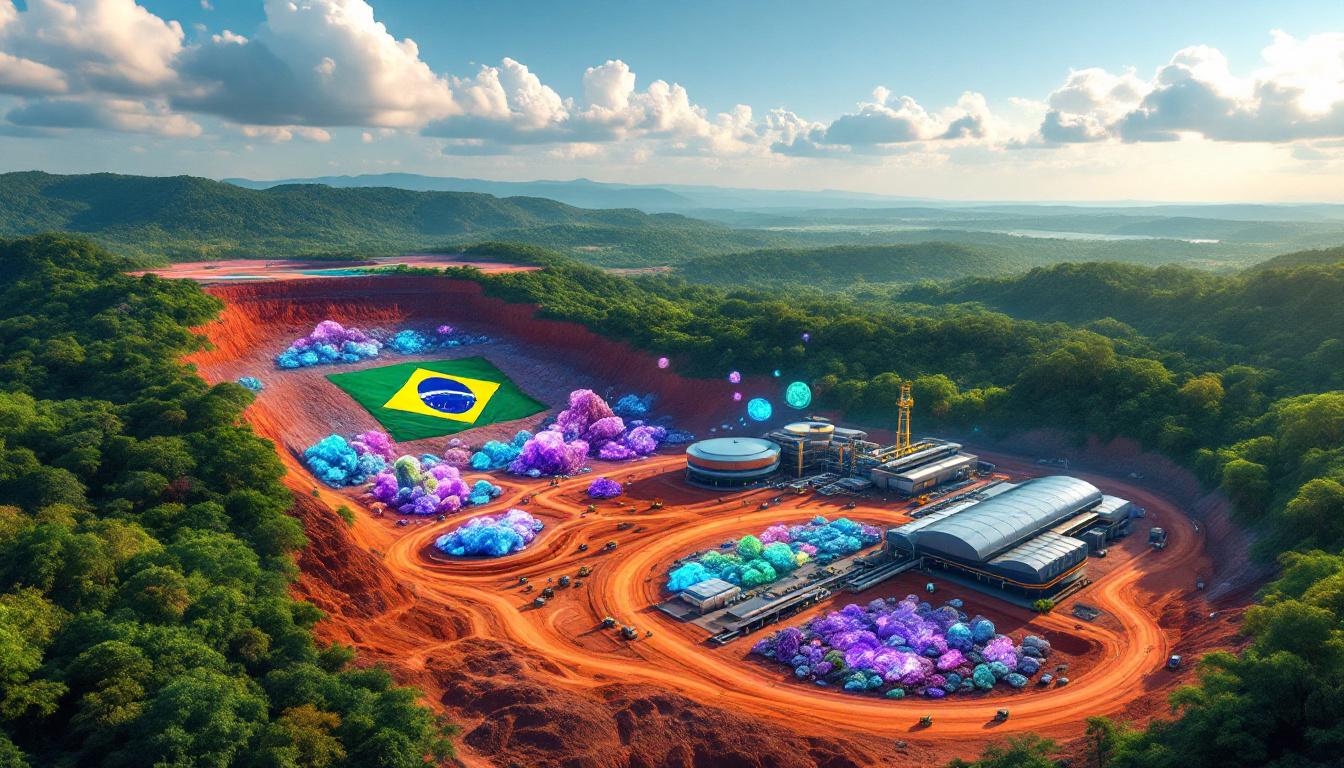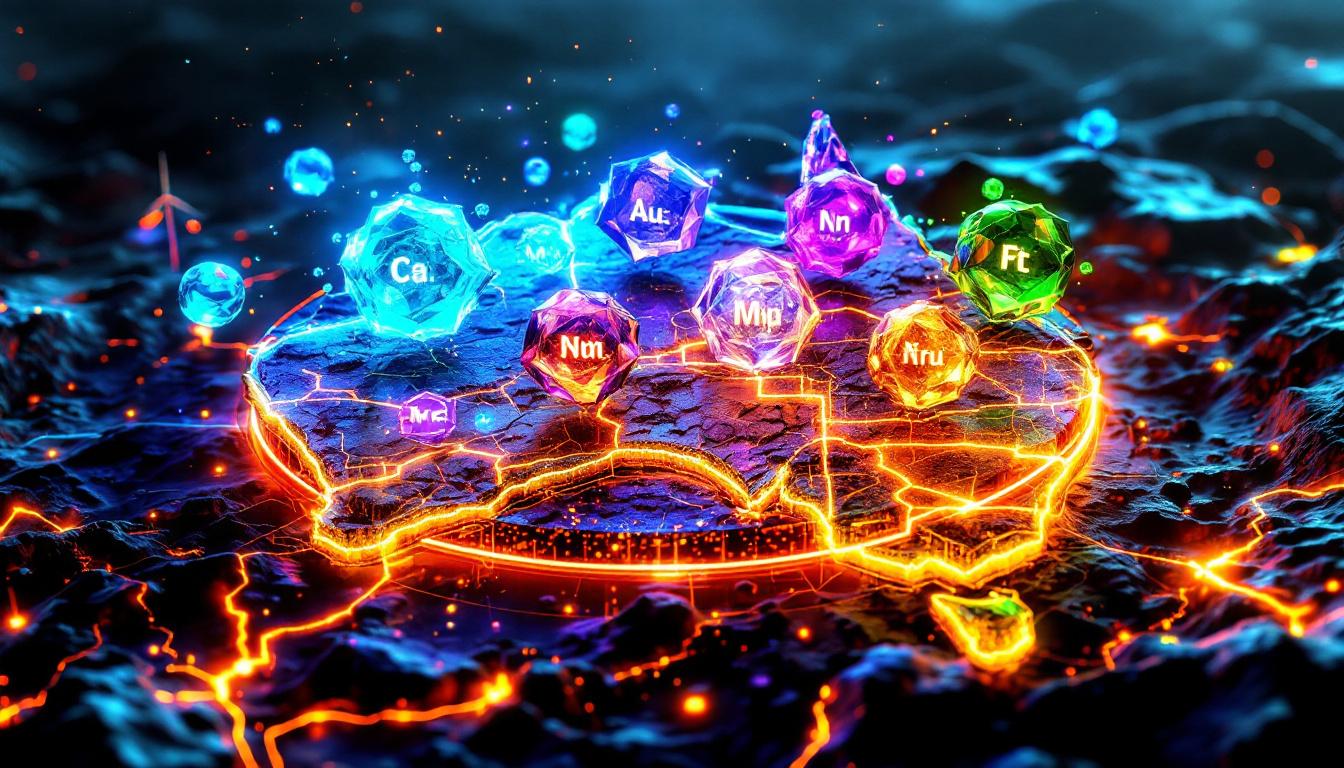What Are Rare Earth Export Permits and Why Do They Matter?
China's system of export permits for rare earth shipments represents one of the most consequential regulatory frameworks in global trade today. These permits act as governmental authorization for Chinese companies to export rare earth elements and products to international markets—but their importance extends far beyond simple paperwork.
Understanding Rare Earth Elements and Their Strategic Importance
Rare earth elements (REEs) comprise 17 metallic elements on the periodic table, including 15 lanthanides plus scandium and yttrium. Despite their name, most aren't particularly rare in the Earth's crust, but economically viable concentrations are uncommon.
These elements are typically categorized into two groups:
- Light rare earths: Including lanthanum, cerium, praseodymium, and neodymium
- Medium and heavy rare earths: Including dysprosium, terbium, and europium—which face significantly stricter export controls due to their critical applications in defense technology
What makes rare earths genuinely "rare" is their irreplaceability in modern technology. They're essential components in:
- Electric vehicle motors and batteries
- Wind turbine generators
- Smartphones and computer hard drives
- Precision-guided munitions and radar systems
- MRI machines and medical equipment
China dominates the global rare earth landscape, controlling approximately 60% of global production according to 2024 USGS data. This far exceeds the combined output of all other producing nations. While China holds about 37% of global reserves, its near-monopoly on processing capacity gives it unprecedented leverage in international trade relations.
"Self-reliance in critical minerals is vital for national security," stated Chinese President Xi Jinping during his symbolic 2019 visit to JL MAG Rare-Earth's facility in Jiangxi province—a statement widely interpreted as signaling China's willingness to use rare earths as a strategic trade weapon.
The Regulatory Framework for Rare Earth Exports from China
China's export control system for rare earths has evolved significantly over the past decade. The most recent critical minerals policy changes enacted in 2025 have introduced a multi-tiered permitting process that differentiates between raw materials, processed components, and finished products.
Key elements of this framework include:
- End-use verification: Exporters must document and verify the intended application of exported materials
- Military vs. civilian distinction: Dual-use technologies face heightened scrutiny
- Volume controls: Annual export quotas for specific elements, particularly heavy rare earths
- Environmental compliance: Certification requirements for sustainable mining practices
To obtain an export permit, Chinese companies must submit extensive documentation to multiple regulatory bodies, including the Ministry of Commerce, the General Administration of Customs, and in some cases, the State Administration for Science, Technology and Industry for National Defense.
JL MAG Rare-Earth, the world's largest manufacturer of sintered neodymium-iron-boron (NdFeB) permanent magnets, reported Q1 2025 export revenue of $43.4 million, with $16.9 million specifically from U.S. shipments. This data, revealed in Shenzhen Stock Exchange filings, demonstrates the substantial economic impact of these permits on international trade flows.
How Has the US-China Trade Relationship Affected Rare Earth Exports?
The history of rare earth trade between the United States and China resembles a geopolitical chess match, with each side making strategic moves to secure advantage while maintaining essential supply chains.
Historical Context of Rare Earth Trade Tensions
China's leveraging of rare earths as a geopolitical tool first became apparent in 2010, when it abruptly reduced export quotas by 40%, triggering alarm throughout global technology and defense industries. This move coincided with a diplomatic dispute with Japan over contested islands in the East China Sea.
The resulting price spike was unprecedented—dysprosium oxide surged 600% in a matter of months, while other elements saw similar volatility. This dramatic market reaction revealed the vulnerability of global supply chains to Chinese policy decisions.
The international response was swift. In 2012, the United States, Japan, and the European Union filed a formal complaint with the World Trade Organization (WTO). In 2014, the WTO ruled against China (case DS431), finding that its export restrictions violated international trade agreements. China formally removed its export quotas in 2015, but replaced them with a more sophisticated system of export permits for rare earth shipments that effectively maintained governmental control.
A watershed moment occurred in May 2019, when President Xi Jinping made a highly publicized visit to JL MAG's production facility in Jiangxi province. Coming amid escalating US‑China trade tensions, Xi's inspection of rare earth facilities—and his remarks about self-reliance—was interpreted globally as a thinly veiled threat that China could restrict rare earth exports to gain leverage in negotiations.
Recent Developments in the US-China Trade Framework
The 2025 London trade talks marked a significant turning point in US-China rare earth relations. Sources close to the negotiations revealed that an agreement "in principle" was reached to stabilize rare earth trade, with China agreeing to more transparent permitting processes in exchange for reduced technology transfer restrictions from the United States.
As one trade analyst quoted by the South China Morning Post noted: "The 2025 framework signals a tactical shift from confrontation to managed competition." This new approach recognizes the mutual dependency that characterizes the relationship—China needs export markets for its rare earth products, while the U.S. remains dependent on Chinese supplies despite diversification efforts.
Key elements of the new framework include:
- Streamlined permit processes for civilian applications
- Increased quota allowances for certain light rare earths
- Continued restrictions on heavy rare earths with military applications
- Enhanced transparency in permit approval decisions
The U.S. Defense Logistics Agency has simultaneously accelerated its stockpiling program, purchasing $35 million in rare earth magnets in 2023 alone. This dual-track approach—diplomatic engagement coupled with supply security measures—reflects the complex nature of US-China rare earth interdependence.
Which Companies Are Leading Chinese Rare Earth Exports?
The Chinese rare earth export landscape is dominated by a handful of major players, with JL MAG Rare-Earth emerging as the preeminent force in high-value magnetic materials.
JL MAG Rare-Earth: Profile of a Global Leader
Founded in 2008 and headquartered in Ganzhou, Jiangxi province, JL MAG has rapidly ascended to become the world's largest manufacturer of sintered NdFeB permanent magnets, commanding approximately 20% of the global market according to Adamas Intelligence's 2024 market analysis.
The company's manufacturing capabilities are impressive:
- Annual production capacity of 15,000 tonnes of sintered NdFeB magnets
- Six production facilities across China
- International facilities in Europe and Southeast Asia
- Vertically integrated supply chain from mining to finished products
JL MAG's financial performance underscores its dominant position. In Q1 2025, the company reported:
- Total export revenue of $43.4 million
- U.S. market exports worth $16.9 million
- European exports of $12.3 million
- Southeast Asian shipments valued at $14.2 million
When the company announced receiving its latest round of export permits in June 2025, investors responded enthusiastically, driving the stock price up 8.7% in a single trading session on the Shenzhen Stock Exchange.
"Our export declarations comply fully with all regulatory requirements," the company stated in its regulatory filing, emphasizing its commitment to operating within China's evolving export control framework.
Other Major Chinese Rare Earth Exporters
While JL MAG dominates the high-value magnet segment, several other companies play crucial roles in China's rare earth export ecosystem:
| Company | Specialization | 2024 Export Volume | Primary Markets |
|---|---|---|---|
| China Northern Rare Earth Group | Raw materials, oxides | 45,000 tonnes | Japan, South Korea, Germany |
| Shenghe Resources | Mining, separation | 18,000 tonnes | Malaysia, Vietnam, Japan |
| Xiamen Tungsten | Heavy rare earths | 8,500 tonnes | Japan, U.S., Germany |
| China Minmetals Rare Earth | Mixed rare earth products | 12,000 tonnes | Southeast Asia, Europe |
These companies employ varying strategies to navigate export regulations:
- Vertical integration: Controlling the entire supply chain from mining to processing
- International partnerships: Establishing joint ventures in countries with free trade agreements
- Product diversification: Developing non-restricted products to maintain export volumes
- End-user certification: Building robust systems to document civilian applications
Hastings Technology Metals, an Australian rare earth company, has secured processing contracts with Chinese firms—creating a new model where Chinese expertise is applied to non-Chinese raw materials, potentially circumventing certain export restrictions.
What Products Are Covered Under Rare Earth Export Permits?
China's export control system employs a sophisticated classification scheme that determines permit requirements based on both the type of rare earth product and its potential applications.
Categories of Rare Earth Products Requiring Export Permits
The permitting system employs a tiered approach based on processing level and strategic importance:
Tier 1: Raw Materials (Minimal Restrictions)
- Rare earth concentrates
- Mixed rare earth carbonate
- Basic rare earth oxides
Tier 2: Processed Materials (Moderate Restrictions)
- Separated rare earth oxides
- Rare earth metals
- Basic alloys
Tier 3: Advanced Materials (Significant Restrictions)
- NdFeB magnet blocks
- Samarium cobalt magnets
- Rare earth phosphors
Tier 4: Finished Components (Strictest Controls)
- Motor rotors with embedded rare earth magnets
- Specialized electronic components
- Laser materials with rare earth dopants
This tiered approach reflects China's strategic objectives: encouraging domestic value-added processing while maintaining control over critical technologies. By imposing stricter controls on higher-value products, China incentivizes foreign manufacturers to establish operations within its borders to secure supply.
The distinction between civilian and military applications creates another dimension of control. Products designated for potential military use—particularly those containing dysprosium, terbium, or yttrium—face substantially higher barriers to export approval.
The Permit Application Process
Obtaining a rare earth export permit involves navigating a complex bureaucratic process:
-
Initial Application Submission
- Company registration with Ministry of Commerce
- Product classification documentation
- End-user certification and verification
-
Technical Review (15-20 days)
- Assessment of product specifications
- Evaluation of strategic importance
- Verification of stated applications
-
Security Review (10-15 days)
- Check against restricted entity lists
- Assessment of military application potential
- National security considerations
-
Final Approval and Issuance (5-10 days)
- Quota allocation if applicable
- Permit documentation
- Customs clearance authorization
The entire process typically requires 45 days for standard applications, though permits for sensitive materials or new customers can take considerably longer. According to China Customs data from 2024, approximately 42% of rejections stem from incomplete end-user documentation—underscoring the importance of thorough preparation.
Multiple regulatory bodies participate in the approval process:
- Ministry of Commerce (lead agency)
- General Administration of Customs
- Ministry of Industry and Information Technology
- State Administration for Science, Technology and Industry for National Defense (for dual-use items)
Companies facing permit challenges often employ specialized consultants to navigate the process, adding significant compliance costs to international trade.
How Are Export Controls Affecting Global Supply Chains?
The ripple effects of China's rare earth export permit system extend throughout global manufacturing networks, forcing companies and countries to reconsider established supply patterns.
Impact on US and European Manufacturing
Western manufacturers dependent on Chinese rare earth supplies face unprecedented vulnerability. Industries particularly affected include:
- Electric vehicle production: Tesla, GM, and Volkswagen all rely heavily on rare earth magnets for motor efficiency
- Wind turbine manufacturing: GE Renewable Energy and Siemens Gamesa require substantial rare earth inputs
- Consumer electronics: Apple, Samsung, and other technology companies depend on rare earths for miniaturized components
- Defense contractors: Raytheon, Lockheed Martin, and Boeing utilize rare earths in various defense systems
These companies have developed several adaptation strategies:
- Inventory stockpiling: Maintaining 6-12 month reserves of critical materials
- Supply diversification: Establishing relationships with emerging suppliers in Australia, Canada, and Africa
- Design modifications: Engineering products to reduce rare earth content
- Recycling initiatives: Developing technologies to recover rare earths from end-of-life products
The economic impact is substantial. According to Adamas Intelligence analysis, non-Chinese supply chains typically carry a 15-20% price premium compared to Chinese-sourced materials. This "security premium" reflects both the actual costs of diversification and the market's risk assessment of potential supply disruptions.
MP Materials, operating the Mountain Pass mine in California, secured a $35 million Department of Defense grant in 2024 to establish domestic magnet production capabilities—illustrating the growing governmental support for supply chain resilience.
Southeast Asian Market Dynamics
Southeast Asia has emerged as a crucial buffer zone in the global rare earth supply chain. Countries like Malaysia, Vietnam, and Thailand are developing significant processing capabilities while maintaining relatively favorable trade relations with both China and Western nations.
Vietnam now processes approximately 12% of global rare earths, according to 2024 USGS data, making it the second-largest processor after China. The country's reserves, estimated at 22 million tonnes, position it as a potential long-term alternative source.
Malaysia hosts Lynas Rare Earths' processing facility, which handles approximately 25% of global demand outside China. This Australian-Malaysian partnership demonstrates the emerging model of cross-border collaboration that may define the future rare earth landscape.
Regional initiatives worth noting include:
- The ASEAN Rare Earth Working Group, established to coordinate policy and investment
- Japan-Vietnam rare earth joint ventures focusing on heavy rare earth recovery
- Singapore's development as a rare earth trading hub with advanced financing mechanisms
These regional developments suggest that Southeast Asia may evolve into a crucial intermediary in the rare earth supply chain, potentially reducing the direct impact of Chinese export controls on end users.
What Are the Long-Term Implications of China's Rare Earth Export Policies?
The trajectory of China's rare earth export controls points toward a fundamentally restructured global market with significant geopolitical and environmental dimensions.
Global Diversification Efforts
The push to reduce dependence on Chinese rare earth supplies has accelerated dramatically, with projects advancing across multiple continents:
- Australia: Lynas Rare Earths operates the world's largest integrated rare earth mining and processing facility outside China, reinforcing Australia's green metals leadership
- United States: MP Materials has restarted production at Mountain Pass with plans for full vertical integration
- Canada: Several advanced projects in Saskatchewan and Quebec are moving toward production
- Greenland: Massive deposits with high concentrations of heavy rare earths are under development
- Brazil: Government initiatives to revitalize dormant rare earth resources
Investment in these projects reflects a strategic calculus beyond simple economics. The European Union's Critical Raw Materials Act of 2023 explicitly aims to source 25% of rare earths from domestic European production by 2030 and limit Chinese-processed materials to 65% of consumption—targets that will require billions in investment.
Research into substitution technologies has also intensified. Areas showing promise include:
- Iron-nitride magnets as alternatives to NdFeB in certain applications
- Reduced-dysprosium magnet formulations for moderate-temperature environments
- Ceramic alternatives for some electronic applications
- Enhanced aluminum-nickel-cobalt (AlNiCo) magnets for specific use cases
However, experts caution that complete substitution remains unlikely for most critical applications, making supply diversification the more practical approach for the foreseeable future.
Sustainability and Environmental Considerations
The environmental footprint of rare earth production represents a crucial but often overlooked dimension of the supply chain debate. According to a 2023 study published in Nature, Chinese rare earth mining operations typically produce three times more radioactive waste than comparable Western projects, largely due to regulatory differences.
This environmental disparity creates both challenges and opportunities:
- Regulatory arbitrage: Lower environmental standards reduce Chinese production costs
- Consumer demand: Growing pressure for "green" supply chains
- Technological development: Cleaner processing methods emerging from Western research
- Circular economy potential: Recycling as an environmentally superior alternative
Currently, only about 8% of rare earths are recycled globally, according to 2024 data from the UN Environment Programme. This represents an enormous opportunity for reducing both environmental impact and supply dependence. Companies like Veolia in France and Hitachi in Japan have demonstrated commercial-scale rare earth recycling, recovering up to 90% of materials from magnets in hard drives and air conditioners.
The long-term sustainability equation must also consider the role of rare earths in critical minerals energy transition. The average wind turb
Looking for Tomorrow's Mineral Discoveries Today?
Discover investment opportunities ahead of the market with Discovery Alert's proprietary Discovery IQ model, which instantly notifies subscribers of significant ASX mineral discoveries and transforms complex geological data into actionable insights. Explore why major mineral discoveries can lead to substantial returns by visiting our dedicated discoveries page and begin your 30-day free trial today.
